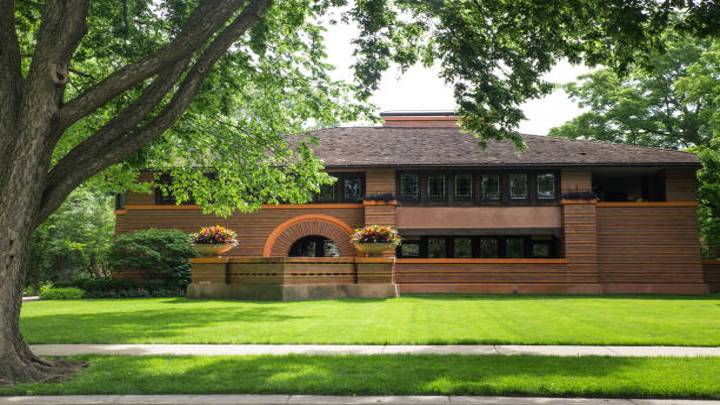The custom home build process for many architects is pretty straightforward. After knowing your budget for the project, you have to determine the style of home you want. The prairie architectural style generally holds a great curb appeal in the eyes of many for its unique features.
Influenced by the Arts and Crafts Movement, the prairie architectural style is designed to reflect and pay homage to the surrounding environment. The architects who found this style believed that the style ought to be defined by the landscape and not the other way around.
Want to learn more about this architectural style? Read this article to learn the history and characteristics associated with this home style. Let’s dive right into it.
What is Prairie-style architecture?

The prairie-style architecture was designed by Frank Lloyd Wright and a group of young architects he worked with. They called themselves “The New School of the Middle West” and were oriented toward creating something fresh and appropriate for modern American living.
The prairie architectural movement started after the Great Chicago Fire of 1871. This sad event opened up several new building opportunities, and young architects like Frank Lloyd Wright and his colleagues took up the challenge.
The basic foundation of this architectural style was to build a home that would function for its dwellers without being too elaborate or overly decorated. They also wanted to celebrate homemade craftsmanship over mass-produced products of the industrial age.
What are the key elements of the prairie architectural style?
Frank Lloyd Wright designed the prairie architecture to appear as if they sprout from the ground. In other words, he wanted these houses to blend with the landscape and not for the building to look out of place.
Although there are different variations of prairie homes, there are several key elements that can help you identify this architecture. Simply look out for the following features;
1. Horizontal lines
Frank Lloyd Wright was a huge fan of linear Japanese prints and this strongly influenced the prairie architectural style as well. So you will find out that in this home style, everything is horizontally oriented. Trims, bricks, cedar sidings, you name them, all horizontally oriented.
2. Handmade craftsmanship
As I mentioned before, prairie-style architecture is greatly influenced by the arts and crafts movement. This is evident in the presence of many handmade woodworks and art glass. These woodworks and art glass are mostly built-in but not overly excessive or detailed.
3. Open floor plans
Prairie homes feature open floor plans, this is when two or more spaces are joined to form a larger space by eliminating partitioned walls. The dining room and living room are the two rooms joined together mostly in the prairie architectural-style home.
4. Flow from inside to outside
Frank Lloyd Wright appreciated nature as a whole, he believed that the home should balance both inside and outside living. This was a major influence on this home style. So you will easily find prairie homes connected to the outdoors, this is evident in the presence of large windows.
Other key elements of the prairie architectural style include the following;
- Large windows
- Brick or stucco exteriors
- Cantilevered, flat roofs
- Natural woodwork and built-in fixtures
- Earthy color palettes to mimic the natural environment
FAQs
What is one of the most famous Prairie style homes?
The Robie House of 1908 is one of Wright’s most famous prairie homes built.
What is the difference between Prairie style and Craftsman?
Although they share many similarities, they are different. Craftsman-style home features more handcrafted items when compared to prairie homes that feature only a little, looking sleeker and more modern in design.
Who founded the prairie architecture?
Frank Lloyd Wright and his colleagues (The New School of the Middle West) are credited for the prairie architectural style.
Conclusion
The prairie architectural style was short-lived, ending shortly after the start of World War I. Nevertheless, the ideals and features of this home style evolved into other styles, like the ranch home style.
Many of the original prairie homes (especially the ones designed by Floyd himself) have been turned into museums. However, there are still some privately owned prairie homes today, and if this home style appeals to you, then you should go for it.
I hope you enjoyed reading this article. You should also see this article on the Tudor architectural style and its characteristics.
Thanks for reading.